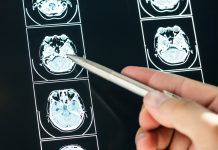
A significant number of stroke patients are at risk of a second stroke due to undiagnosed atrial fibrillation, a heart rhythm disorder, according to the NOR-FIB study.
The study, led by Dr. Barbara Ratajczak-Tretel of Østfold Hospital Trust, revealed that nearly one-third of patients with strokes of unknown causes actually have treatable atrial fibrillation, often asymptomatic.
Ischaemic Strokes and Atrial Fibrillation
Most strokes are ischaemic, caused by a blockage stopping blood flow to the brain. In about 25% of these cases, the reason remains unidentified, making effective treatment challenging.
“The best therapy to prevent another stroke depends on the underlying cause,” Dr. Ratajczak-Tretel said. Identifying atrial fibrillation is crucial as it mandates the prescription of oral anticoagulants.
The NOR-FIB Study: Methodology and Findings
The study recruited 259 patients from Norway, Denmark, and Sweden, who had suffered an ischaemic stroke or transient ischaemic attack (TIA) with an unknown cause.
A tiny cardiac monitor, the size of one-third of a AAA battery, was implanted subcutaneously over each patient’s heart. Data were then transmitted weekly to a core lab for analysis.
During the year-long monitoring period, 74 patients (29%) were diagnosed with atrial fibrillation, 93% of whom showed no symptoms.
Upon diagnosis, oral anticoagulation therapy was initiated in 97% of these cases.
Two strokes occurred in this group before the diagnosis and treatment, while nine occurred in the group without atrial fibrillation, though the difference was not statistically significant.
Minimizing Risks with Advanced Monitoring
The results highlight the efficacy of continuous monitoring in identifying underlying, asymptomatic atrial fibrillation in stroke patients.
“Atrial fibrillation was asymptomatic in most cases and may not have been detected or treated without continuous monitoring,” Dr. Ratajczak-Tretel stated.
The Bigger Picture
Given the challenges in diagnosing atrial fibrillation—particularly when it’s asymptomatic—continuous monitoring could become a game-changer for stroke prevention.
By identifying the probable cause of the initial stroke or TIA, appropriate treatment can be initiated, dramatically lowering the risk of a subsequent stroke.
Device Safety
The study also noted a low rate of complications related to the device.
Only three patients (1.2%) experienced issues such as skin tear, infection at the implantation site, or subcutaneous bruising, affirming the safety of this monitoring method.
Conclusion
The NOR-FIB study illuminates the critical role of advanced, continuous heart rhythm monitoring in stroke patients.
It calls for broader adoption of these technologies in healthcare systems to minimize the risk of recurrent strokes.
The study’s findings offer hope for those affected by strokes of unknown causes, providing a path to targeted treatment and prevention.
If you care about stroke, please read studies about how to eat to prevent stroke, and scientists find a breakfast linked to better blood vessel health.
For more information about stroke, please read studies about how to eat to prevent stroke, and scientists find a breakfast linked to better blood vessel health.
Follow us on Twitter for more articles about this topic.
Copyright © 2023 Knowridge Science Report. All rights reserved.



